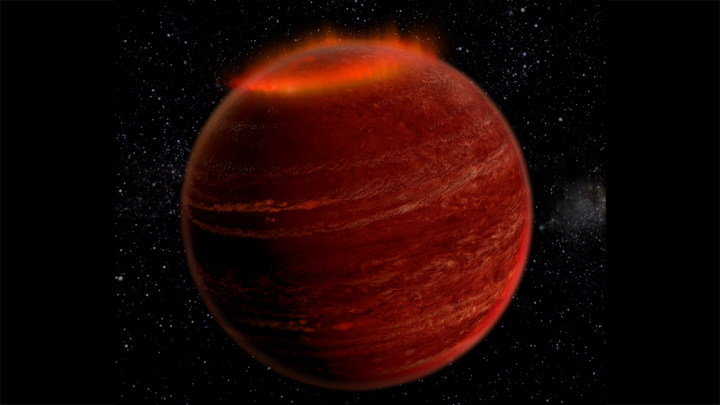TORONTO – The northern lights, or aurora borealis, don’t just provide a beautiful light show seen here on Earth, or even on other planets in our solar system. A new study has found that these beautiful, colourful lights can also light up brown dwarfs, often referred to as failed stars.

Brown dwarfs are complicated celestial bodies. They are bodies that are too massive to be planets, but lack the internal combustion to create nuclear fusion and shine as a star does.
READ MORE: Astronomers find ancient star system with 5 Earth-size planets
Using a radio telescope, an international team of astronomers focused on a brown dwarf about 20 light years away. As the brown dwarf rotated, the astronomers detected a bright pulse of radio waves.
Then, using an optical telescope, they found that the brightness varied from time to time during the same period of the radio pulses, and that there was a bright feature on the surface of the brown dwarf.
They used a third telescope to measure the brightness. Using all this data, astronomers concluded that the bright feature was likely caused by electrons interacting with the hydrogen-dominant atmosphere of the brown dwarf — causing auroras. And what’s more exciting is that the auroras on this world are 10,000 times more powerful than any here on Earth.
Though the auroras are the same phenomena that we see here on Earth, it isn’t caused by the same process.
“What we see on this object appears to be the same phenomenon we’ve seen on Jupiter, for example, but thousands of times more powerful,” said Gregg Hallinan, of the California Institute of Technology.
Here on Earth, the sun’s solar particles interact with Earth’s magnetic field. But in the case of the brown dwarfs, the process of the electrons interacting with the hydrogen is what is more commonly seen around the larger planets in our solar system like Jupiter and Saturn.
This discovery could aid in detecting similar processes around exoplanets, planets orbiting other stars. It also may help determine where brown dwarfs should be classified — as planets or as failed stars.
“Brown dwarfs span the gap between stars and planets and these results are yet more evidence that we need to think of brown dwarfs as beefed-up planets, rather than ‘failed stars,'” said Stuart Littlefair, from the University of Sheffield’s Department of Physics and Astronomy.


Comments